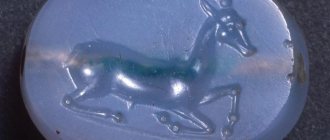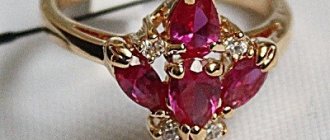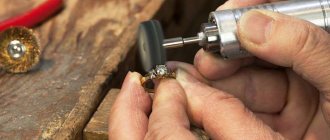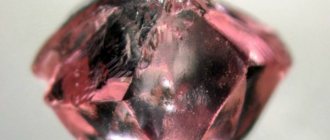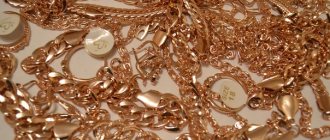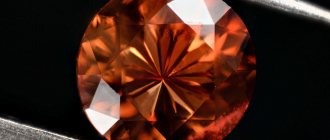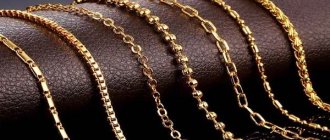Not to be confused with petroglyph or sculpture.
The act of shaping stone materials
Stone carver at the Cathedral of St. John the Evangelist, New York, 1909. The Kilmartin Stones in Scotland is a collection of ancient stone carved graveslabs Khazneh structure carved into the rock at Petra in southern Jordan
Stone carving
is an activity in which pieces of rough natural stone are shaped by controlled stone removal. Thanks to the immutability of the material, the stonework created in our prehistory has been preserved.
The work carried out by Paleolithic societies to create stone tools is more commonly referred to as hammering. Stone carving that is done to create inscriptions is more commonly called inscription. The process of removing stone from the ground is called mining or quarrying.
Stone carving is one of the methods that an artist can use when creating a sculpture. The term also refers to the activity of masons in processing stone blocks for use in architecture, construction, or civil engineering. It is also a phrase used by archaeologists, historians, and anthropologists to describe the activities involved in the creation of certain types of petroglyphs.
History[edit]
The earliest known works of fine art are stone carvings. Often footprints, rock-cuts or petroglyphs, are preserved where there is no painting. Prehistoric Venus figurines, such as the Venus of Berekhat Ram, may be 800,000 years old [ citation needed]
] and are carved from stones such as tuff and limestone.
These earliest examples of stone carving are the result of a softer stone being struck or scratched by a harder one, although it is known that more resilient materials such as antler were sometimes used to make relatively soft stone. Another early method involved using an abrasive that was rubbed against the stone to remove the unwanted area. Before the discovery of steel by any culture, all stone carving was done using an abrasion technique after roughly chiseling a stone block using hammers. The reason for this is that bronze, the hardest metal available before steel, is not hard enough to cut any but the softest stone. The ancient Greeks used the malleability of bronze to trap small granules of carborundum, which occur naturally on the island of Milos, making it a very effective file for polishing stone.
The development of iron made possible stone carving tools, such as chisels, drills and saws, made of steel, which could be hardened and tempered to a state hard enough to cut stone without deformation, but not so brittle as to break . Carving tools have changed little since then.
Modern industrial methods for processing large volumes of materials still rely heavily on abrasion for cutting and stone removal, although much faster with processes such as water erosion and diamond cutting.
One modern stone carving technique uses a new process: the technique of applying sudden high heat to the surface. Expansion of the top surface due to a sudden increase in temperature causes it to tear off. Oxy-acetylene torches are used on a small scale. Lasers are used on an industrial scale. On a huge scale, carvings such as the Crazy Horse Memorial carved from Harney Peak granite at Mount Rushmore and the Confederate Memorial Park in Albany, Georgia are produced using jet heat torches.
What to cut
When choosing how to cut artificial stone, it is worth remembering the above types. You can use a fine-tooth saw or hacksaw to cut acrylic or plaster. It is worth remembering that gypsum generates a lot of dust when sawed with a grinder. In addition, this tabletop is fragile. You can simply break it by first making a depression in the right place - at the risk.
For cutting porcelain stoneware and agglomerate use:
- Grinder and diamond-coated discs;
- Electric tile cutter;
- Circular saw.
You can also use a hacksaw with a diamond or pobedite blade, but electric tools are more convenient and faster to use.
Stone sculpture[edit]
Main articles: Stone sculpture and Architectural sculpture
Tang Dynasty Leshan Giant Buddha, near Leshan in Sichuan Province, China. Construction began in 713 and was completed in 803. It is the world's largest stone-carved Buddha.
Bas-relief, late 19th century AD Limestone. Brooklyn Museum
Carving stone into sculpture is an activity older than civilization itself. Prehistoric sculptures were usually of human forms, such as the Venus of Willendorf and the faceless statues of Cycladic cultures. Later cultures invented animal, human-animal, and abstract forms in stone. Ancient cultures used abrasive methods, and modern technology uses pneumatic hammers and other tools. But for most of human history, sculptors used the hammer and chisel as their primary tools for carving stone.
The process begins with choosing the stone to carve. Some artists take inspiration from the stone itself; Renaissance artist Michelangelo claimed that his work was meant to free the human form trapped inside the block. Other artists start with a shape already in mind and find a stone that complements their vision. The sculptor may begin by creating a model in clay or wax, sketching the shape of the statue on paper, or tracing the general outline of the statue on the stone itself.
In preparation for cutting, the artist usually begins by chipping away large pieces of scrap stone. This is the "rough" stage of the sculpting process. For this task, they may choose a point chisel, which is a long, hefty piece of steel with a point at one end and a wide striking surface at the other. The pitching tool can also be used at this early stage; which is a wedge-shaped chisel with a wide flat edge. A pitching tool is useful for splitting stone and removing large unwanted pieces. These two chisels are used in conjunction with a mason's hammer.
Once the general shape of the statue is determined, the sculptor uses other tools to refine the figure. A serrated or claw chisel has multiple extrusion surfaces that create parallel lines in the stone. These tools are typically used to add texture to a shape. The artist can mark specific lines by using a caliper to measure the area of stone to be worked on and marking the area of removal with a pencil, charcoal or chalk. The stone carver usually uses a finer blow at this stage of the process, usually in combination with a wooden mallet.
Eventually the sculptor worked the stone from a rough block into the general shape of the finished statue. Tools called rasps and rifflers are then used to give the final shape to the mold. A rasp is a flat steel tool with a rough surface. The sculptor uses broad, sweeping strokes to remove excess stone in the form of small chips or dust. A riffler is a smaller type of rasp that can be used to create details such as folds in clothing or strands of hair.
The final stage of the carving process is polishing. You can use sandpaper or sanding cloth as the first step in the polishing process. Emery, a stone that is harder and rougher than sculpture material, is also used in the finishing process. This abrasion or abrasion brings out the color of the stone, brings out patterns on the surface and adds shine. Tin and iron oxides are often used to give the stone a highly reflective appearance.
Sculptures can be carved either directly or indirectly. Indirect carving is a method of carving using a precise clay, wax or plaster model, which is then copied using a compass or proportional dividers
[1] or pointing machine. The direct carving method is a way of carving in a more intuitive way, without first creating a complex model. Sometimes a sketch is made on paper or a rough clay sketch.
How is the work going?
First of all, you need to prepare the place of work. It should be well ventilated, the furniture nearby should be covered with a cloth so that dust does not fall on it when cutting. It is also necessary to protect your hands, eyes and respiratory organs: use a respirator, mask or goggles, closed clothing.
Source nikastroy.ru
Having decided what to cut the decorative stone with and having prepared, you can get down to business. The cutting process consists of several steps:
- First, you need to place the artificial stone on a solid and level surface from which it will not move, and secure it. It is important that the cut part falls on the floor or the master’s foot and does not break off on its own, leaving the edge uneven.
- Then apply the markings with a pencil or using construction tape.
- Next, using a grinder with a diamond blade, saw through the tabletop. If its thickness is greater than the diameter of the saw blade, make a cut, then carefully break off a part along this cut. When using a hacksaw, you usually cut right through.
- At the end, the cut is ground and cleaned if necessary.
To drill stone, use a drill, screwdriver or hammer drill. The latter is especially effective in operation. If desired, you can cut the stone using these tools: just make holes along the cut line and break the blade. However, experienced craftsmen do not recommend doing this, since the cut turns out uneven, with notches.
Source stonecraft24.ru
Recommendations for stone carving[edit]
Arabic style carvings on ashlar building blocks, Beith, Scotland
Stone has been used for carving since ancient times for many reasons. Most types of stone are easier to find than metal ores, which must be mined and smelted. The stone can be excavated from the surface and cut with hand tools. Stone is stronger than wood, and stone carvings last much longer than wooden products. Stone comes in many varieties, and artists have many options to choose from in terms of color, quality, and relative hardness.
Soft stone such as chalk, soapstone, pumice and tuff can be easily carved from found objects such as harder stone or, in the case of chalk, even a fingernail. Limestone and marble can be processed using abrasives and simple metal tools. Granite, basalt, and some metamorphic stones are difficult to cut even with iron or steel tools; tungsten carbide tipped tools are typically used, although abrasive materials still work well. Modern methods often use abrasive materials attached to machines to cut the stone.
Precious and semi-precious stones are also cut into thin shapes for jewelry or larger items and polished; this is sometimes called lapidary, although strictly speaking lapidary refers only to cutting and polishing.
When worked, some stones produce dust that can damage the lungs (silica crystals are usually the culprit), so a respirator is sometimes required.
Engraving tools
In addition to the devices discussed, there are other special devices for engraving. Using them, the master can apply a design to the slab, giving it the required relief. Such complex work requires the correct selection of working material and the presence of artistic skills from a specialist. Even small and airy engravings made on solid granite will last for many centuries.
An engraver's hand tools include scarpels, which are faceted steel rods with all kinds of tips (“tooth” 2 - 25 mm). With their help, an engraving (drawing) is applied to the surface.
Another tool for the engraver is the scriber. The scriber differs from scarpels by the presence of a special pobedite tip. It is used to mark stone and draw deep straight lines.
Stone processing and tools[edit]
Basic stone carving tools fall into five categories:
- Percussion tools for striking - such as hammers, axes, adzes, bouchards and serrated hammers.
- Tools for roughing stone to form a block of the desired size for carving. These include feathers, wedges and pitching tools.
- Cutting chisels such as lettering chisels, points, cutting tools and claw chisels. Chisels, in turn, can be manual and hammer or pneumatic.
- Diamond tools, including burrs, cups and blades, found on a variety of power tools. They are sometimes used throughout the entire carving process, from rough work to final finishing.
- Abrasives for material removal such as carborundum blocks, drills, saws, grinding and cutting wheels, water abrasives and dressing tools such as French and English dredges.
More advanced processes, such as laser cutting and jet torches, use sudden heat combined with cooling water to break up stone flakes. Other modern processes may involve diamond wire machines or other large-scale production equipment to remove large areas of unwanted stone.
Using a chisel for stone carving
possible in several ways. Two of them:
- A mason's move in which a flat chisel is used at an angle of approximately 90 degrees to the surface in a structured passage. It breaks the rock beneath it, and each subsequent pass lowers the surface.
- A letter stroke in which the chisel is used along the surface at an angle of approximately 30 degrees to cut under the existing surface.
There are many types and styles of stone carving tools, each carver decides which tools to use. Traditionalists may only use hand tools.
- Lettering chisels for fine strokes create lettering detail in larger applications.
- Fishtail carving chisels are used to create pockets, indentations, and for intricate carvings while providing clear visibility around the stone.
- Masonry chisels are used for general shaping of stones.
- Stone pointed tools are used for roughing the surface of stone.
- Stone claw tools are used to remove ridges and depressions left by previously used tools.
- Stone driving tools are used to remove large quantities of stone.
- Stone cutters are used to split stones by drawing a line along the stone with progressive strokes until the stone splits along the line.
Electrically driven pneumatic hammers make hard work easier. Pneumatic carving tools allow you to cut stone faster. Pneumatic hammers (such as Cuturi) produce many thousands of blows per minute at the end of the tool, which is usually manufactured or modified to suit the application. This type of tool provides the ability to "shave" the stone, providing a smooth and consistent stroke, allowing large surfaces to be processed.
Among modern types of tools, two main stone carvings can be distinguished:
- Heat treated high carbon steel tools - usually forged
- Tungsten carbide tipped tools are typically forged, splined, and carbide inserts that are brazed to provide a harder, longer-lasting cutting edge.
DIY glyptics at home
For beginners, it is advisable to carve on soft minerals. Limestone, soapstone, and alabaster (construction gypsum) are used. They are suitable for work at home and can be processed with hand or mechanical compact tools. It is better to apply abstractions, but over time complex plots will be obtained.
They also sell professional-grade portable equipment. Therefore, experienced stone cutters can also set up a workshop at home.
At home, artistic carving is possible:
- by bone;
- agate;
- silicon;
- multilayer jasper.
To work at home, you need coarse, medium, fine and fine-grained abrasives. The first is used to clean the surface during carving. The last three are for detailing the relief and grinding and polishing.
Algorithm of actions:
- Select a workpiece for carving.
- Thinking through the plot.
- Level the surface of the stone.
- They grind the gem on the faceplate.
- Prepare a sketch or cast of the drawing on plasticine or clay. It is allowed to draw an image on a stone.
- Carving begins with hand or mechanical tools, roughing and grinding drills. During the process, the drawing is checked against the image model.
- Polish with fine-grained abrasive.
If there are cracks, the thread is made along the damage. If the stone is cracked, the pieces are glued together with epoxy resin.
View this post on Instagram
Posted by Intaglio and Cameo (@detelinacameo) Apr 22, 2022 at 10:10 am PDT
View this post on Instagram
Posted by Lala Ragimov intaglio gems (@lalaragimov) Oct 1, 2019 at 10:12 am PDT
View this post on Instagram
Publication from ? Tatosha? (@tatosha.art) Oct 27, 2022 at 1:36 PDT
View this post on Instagram
Posted by Intaglio and Cameo (@detelinacameo) Oct 22, 2022 at 8:26 am PDT
Gallery[edit]
- Direct carving method: "Unknown Righteous Among the Nations", red granite sculpture by Shelomo Selinger (b. 1928), 1987, Yad Vashem, Jerusalem, Israel.
- Using cork and feathers to split a piece of quarry marble
- Carrara marble quarry
- Punching tool used for preliminary rough processing of stone blocks
- Carved flower on stone, antique work, Jaffna Archaeological Museum, Sri Lanka
- Carved sculpture, antique work, from Chichen Itza, Mexico
- Seljuk Gök Medrese in Tokat, Türkiye
- Famous khachkar in Goshavank Armenia
Let's move on to the process
Now, holding the hammer in your dominant hand and the chisel in your free hand, you can begin to carefully process the stone; the technology will not cause much trouble.
Carve in the middle of the stone, not around the periphery.
Use the chisel parallel to the cracks, not perpendicular to them.
Apply the final touches to the product using a file.
Polish the finished product with sandpaper.
Your little piece of art is ready!
You can make many interesting crafts from stones:
- candlestick made of natural stone;
- raccoon figurine;
- amber rose.

